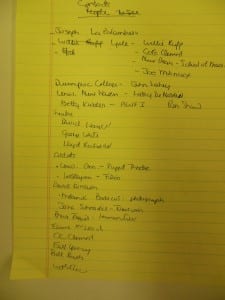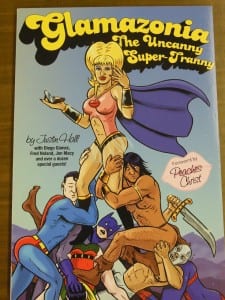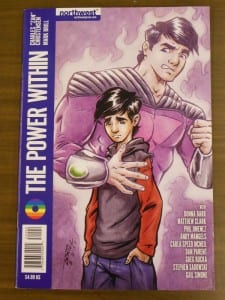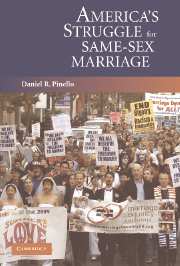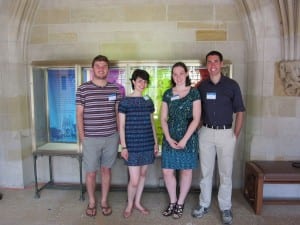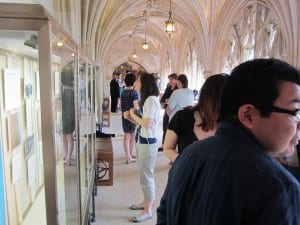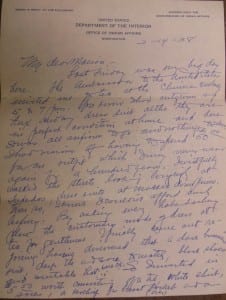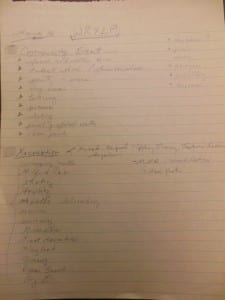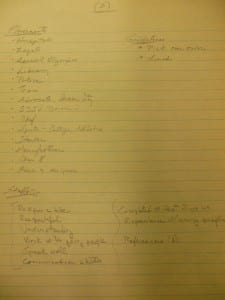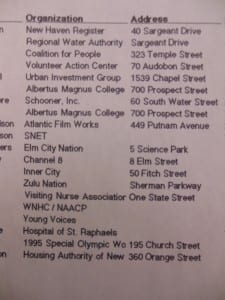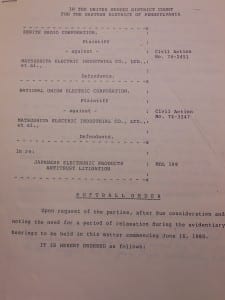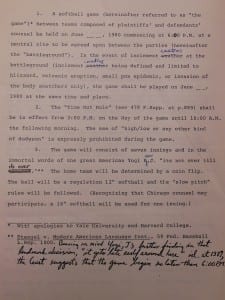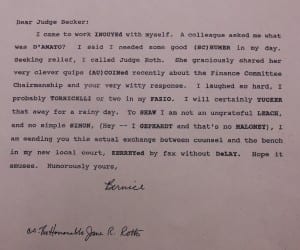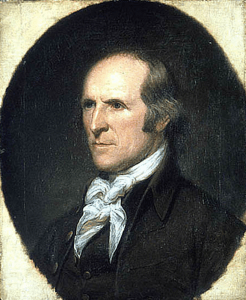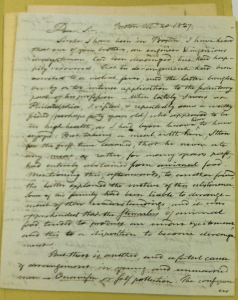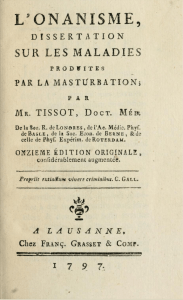The women’s rights movement was one of the most significant of the Progressive Era. In addition to the right to vote, women advocated for equal rights to access to higher education, the professions, and other occupations; for marital and property rights; and for freedom of information on family planning. While the media focuses on the centennials of World War I-related events, it is important to note other historic milestones. In 1914, “Birth Control,” was a new term coined by the movement’s leader, Margaret Sanger. And in 1916, a new wave of women’s activism led to the opening of the first public birth control clinic in America. Important groups of papers of Margaret Sanger’s colleagues, socialist (later Communist) Rose Pastor Stokes and anarchist Emma Goldman (in the Harry Weinberger Papers) are in Manuscripts and Archives, Yale University Library.

Rose Pastor Stokes (1879-1933), political activist and author, at her desk in her New York City apartment. Rose Pastor Stokes Papers (MS 573), Box 10, Folder 20.
Born in 1879, Stokes vividly described her early life in her autobiography, I Belong to the Working Class. The drafts in her papers were edited and published in 1992. A poor Jewish immigrant from Russian Poland, at the age of eleven Stokes went to work in a Cleveland cigar factory and struggled to educate herself at the public library at night. In 1903 she moved to New York City and became a feature writer for the Jewish Daily News. On an assignment she interviewed the “millionaire socialist” James Graham Phelps Stokes, whose brother, Rev. Anson Phelps Stokes was the Secretary of Yale University. When they were married in 1905, the tabloids dubbed her “the Cinderella of the sweatshops.” Working with her husband in the socialist movement, Stokes moved progressively to the left and eventually became the highest-ranking woman in the American Communist Party. Highly talented, she was a charismatic political speaker, writer, dramatist, poet, artist, and singer. Her fearless dedication to reform causes is reflected in her correspondence and subject files.
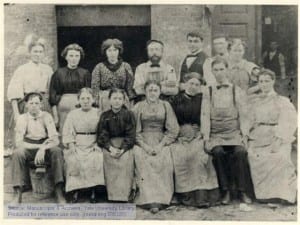
Workers at Gleichmans Cigar Factory in Cleveland. Rose H. Pastor is in back row, third from left. Rose Pastor Stokes Papers (MS 573), Box 10, Folder 20.
In January 1916 Stokes supported Sanger, who was facing federal charges for distributing “obscene” literature on birth control, by organizing a dinner to raise funds for her defense at the historic Brevoort Hotel on lower Fifth Avenue. Margaret Sanger described it in her autobiography as follows:
As we were about to go in to dinner, Rose Pastor Stokes, the Chairman, took me aside and said, “Something very disturbing has happened. We’ve just been talking to Dr. Jacoby. He has a speech ready in which he intends to blast you to the skies for interfering in what should be a strictly medical matter. Remember he’s greatly admired and he’s speaking here tonight for the doctors. We meant to have you come at the end of the program but now we’re going to put you first so that you can spike his guns.” My trepidation was increased. Nevertheless, I plunged into my carefully prepared maiden speech in behalf of birth control.
In October 1916 Sanger opened the Brownsville Clinic in Brooklyn where her pamphlet What Every Girl Should Know was distributed. She was arrested and served 30 days in jail, but nonetheless in December the New York Birth Control League was established. In 1921 Sanger united the growing number of state leagues into the American Birth Control League, renamed “Planned Parenthood” in 1942.
Emma Goldman, an early mentor of Margaret Sanger and the author of Why and How the Poor Should Not Have Many Children, was arrested in 1916 for her birth control lectures and public instruction. On December 22, 1916 she wrote to her attorney, Harry Weinberger on her “Mother Earth Publishing Association; Mother Earth – Monthly Magazine of Anarchist Thought” letterhead stationery: “Please write a letter to the Judge… Tell him about Dr. Robinson’s book and the Margaret Sanger pamphlets that are being sold everywhere and go through the mail…. Then tell him about the birth control campaign, of the people in different professions sponsoring. …Write to the judge that none of us who are engaged in the birth control campaign stoop to sneaking in a leaflet in a book.”
Blog post author: Judith A. Schiff

